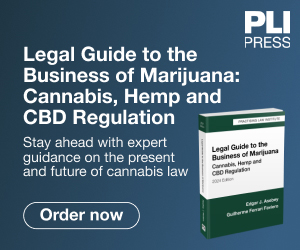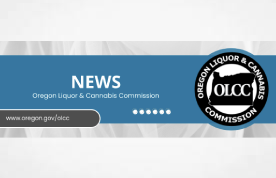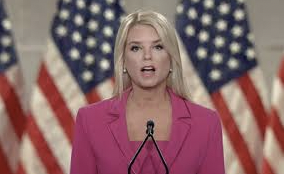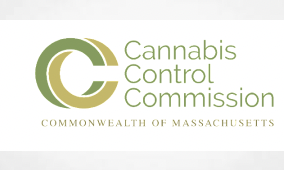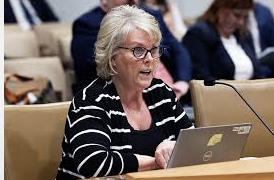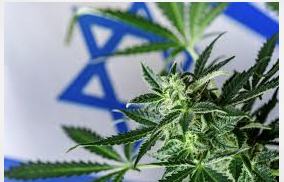Facts and Procedural History:
The Controlled Substances Act was passed in 1970 and created a single legal framework for regulating substances that are thought to have a high risk of abuse and addiction. The CSA may apply to medicines that are used for medicinal or recreational purposes, it also forbids the manufacturing and distribution of certain drugs, one of which is marijuana. The only exception is for government approved research projects. The statute places drugs in five schedules, each of which comes with its own restrictions as applicable to the schedule classification. One of the reasons a drug can be categorized as Schedule I is if it has no acceptable medical use. California passed the Compassionate Use Act in 1996, which established an exception to the prohibition on marijuana possession and cultivation which was medical necessity as approved by a licensed physician. Defendant and respondent Oakland Cannabis Buyers’ Cooperative created a medical dispensary that would serve eligible patients. Despite this act, the United States then sued the Cooperative to prevent them from distributing and manufacturing marijuana. On the district level, the court granted an injunction on the distribution, however the Cooperative continued to operate its business, which led to the government initiating contempt proceedings against them. The Cooperative argued the medical necessity defense asking for a medical-necessity exemption to be added to the injunction. After finding a lack of evidence that patients were in danger of imminent harm without marijuana, the district court denied the Cooperative’s motion and changed the injunction to allow for government seizure of the Cooperative property. The Cooperative appealed, however eventually chose to declare the proceeding as moot and promised to comply with the original injunction.
This case was the cause of a lot of controversy, which led to the court of appeals to consider the merits of the issue and reverse, holding that medical necessity is a cognizable legal defense in these circumstances. The case was then remanded to the district court for consideration of the criteria for a medical necessity exemption. The district court granted the Cooperative’s motion of modifying the injunction to include a medical necessity defense. The US Supreme Court granted certiorari.
Case Reversed and Remanded.
Issue:
Does the Controlled Substance Act, which is a federal law that prohibits the manufacturing and distribution of marijuana, exclude medical necessity as a defense?
Rule:
Medical necessity is not a defense to the manufacturing and distribution of marijuana. Under federal law, the Controlled Substances Act implies that marijuana has no acceptable medical use, implicitly prohibiting the use of medical necessity as a defense.
Analysis:
Judge Clarence Thomas delivered the majority opinion.
Medical Necessity was not seen as a defense to the distribution and manufacturing of marijuana. The basis of his conclusion was the claim that marijuana does not serve any medical benefits and therefore does not warrant the medical-necessity exception. The act does not explicitly deny the public this defense, however it establishes the precedent that this defense will not hold up in a court of law. Judge Thomas notes the congressional intent behind the creation of this act, which cannot be ignored by the courts. Marijuana was placed in the most extreme and restrictive of five categories of narcotics, specifically as a Schedule I drug. The Cooperative depicts that even though it is categorically a Schedule I drug, it is maintained that it is medically necessary despite Congressional determination that marijuana has no medical benefit. The only exception Congress necessitated for the distribution and manufacturing of marijuana is for government approved research, which the respondents were not engaged in.
Conclusion:
The Controlled Substances Act labels marijuana as a Schedule I drug, defining it as having no medical value therefore making the medical necessity defense implicitly inapplicable to the sale and distribution of marijuana.
Takeaways:
Medical Necessity v. Political Agenda
Controlled substances subject to the CSA are divided into categories known as Schedules I through V, based on their medical utility and potential for abuse and dependence. Substances considered to pose the greatest risk to the public health and safety are subject to the most stringent controls and sanctions. A lower schedule number corresponds to greater restrictions, so substances in Schedule I are subject to the strictest controls. Many substances regulated under the CSA are also subject to other federal or state regulations, including the Federal Food, Drug, and Cosmetic Act (FD&C Act).
To consider the full impact of this Supreme Court decision it is necessary to delve into the history of the Controlled Substance Act. In his analysis, Judge Thomas relies on the literal reading of the statute itself, disregarding the history and the intent behind it. The criminalization of marijuana was the result of racially motivated policies, such as the Marijuana Tax Act of 1937. This imposed restriction on possession on those who paid a steep tax for the already limited medical and industrial applications. The Tax Act was litigated in Leary v. United States, in which the court held that purchasing the tax stamp was equal to self-incrimination. This decision led Congress to pass the more elaborate Controlled Substances Act of 1970.
A year after the CSA was passed, United States former President Richard Nixon declared the War on Drugs naming drug abuse as “public enemy number one” and increasing the funding for drug control agencies. Ronald Reagan continued this frontline war in 1981 by expanding the reach of the war and shifting his focus on ensuring criminal punishment over treatment ultimately leading to mass incarceration for nonviolent drug offenses.
The irony of the CSA is that its purpose is to help maintain public health and general welfare through regulation. However, despite research and advocacy marijuana remains a Schedule I drug, whereas Cocaine is a Schedule II drug and Xanax is a Schedule IV. In 1972, the Shafer Commission formerly known as the National Commission on Marijuana and Drug Abuse, appointed by President Nixon himself, concluded that cannabis was as safe as alcohol and urged that prohibition be abolished in favor of a public-health policy. In 1972, the Federal Bureau of Narcotics had been removed from the Treasury Department and merged into the United States Department of Justice, where Nixon’s associate, Attorney General John Mitchell, officially named cannabis a Schedule I drug before resigning to head Nixon’s re-election campaign. He was later put on trial for the Watergate scandal, serving 19 months in prison for conspiracy, perjury and obstruction of justice.
The Administrator of the Drug Enforcement Administration (DEA), which is part of the Department of Justice (DOJ), as well as Congress, can add a drug to a schedule, move a controlled substance to a different schedule, or remove a controlled substance from one. In 1988, the DEA’s own Administrative Law Judge Francis Young found that, “Marijuana, in its natural form, is one of the safest therapeutically active substances known to man. By any measure of rational analysis marijuana can be safely used within a supervised routine of medical care.” He recommended unscheduling marijuana however this petition was denied. Consequently, in 1999, Institute of Medicine declared that marijuana has medical applications and a minimal potential for addiction, in response to California’s medical legalization, prompting another wave of lobbying. In 2011, the DEA again dismissed a petition, claiming a lack of accessible studies especially on smoked marijuana in the United States.
Medical marijuana has been demonstrated to be beneficial in treating chronic non-cancer pain, nausea and vomiting associated with chemotherapy, wasting syndrome linked with AIDS, and reducing muscular spasms related to multiple sclerosis in recent studies. According to these research, marijuana’s therapeutic advantages outweigh its negative effects, and the medicine should be prescribed to patients who have failed to react to previous treatments.
Political agenda led by predominantly white male actors in positions of power has led to mass incarceration and obliteration of BIPOC communities. Marijuana prohibition has depicted that political agenda is historically valued over public welfare despite research and opposition within those systems that prove contrary. This Supreme Court decision is integral because it illustrates the extent of collaboration within the government with those ideals.

Daniella Styagova
Daniella is a second-year law student at New York Law School and is interested in the mergers and acquisitions of cannabis companies. Daniella is currently researching major M & A agreements in the industry.
